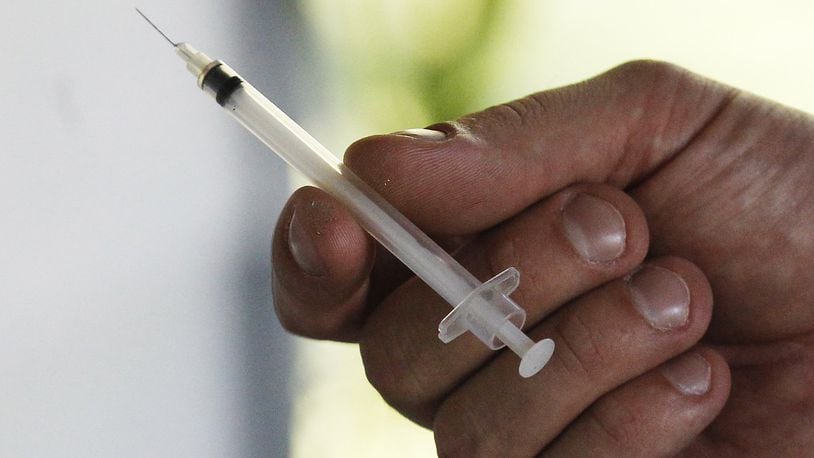Overall, 2,255 Montgomery County patients received emergency treatment last year for overdoses. Almost 13 percent — or 287 patients — made multiple trips to an emergency department.
The 12-page report was not distributed to alarm the community, but rather to assist local officials in analyzing overdose trends and finding solutions, said Dan Suffoletto, spokesman for Public Health - Dayton & Montgomery County.
“The reason for sending this out is to show an example of how we get data here to make decisions and distribute resources when an anomaly occurs,” Suffoletto said.
Hospital and urgent care emergency data — stripped of identifying information — are reported in near real time to the Ohio Department of Health’s EpiCenter, the state’s syndromic surveillance system. The system, traditionally used to monitor influenza pandemics and detect environmental exposures and potential bioterrorism, was expanded in 2015 to monitor drug-related emergency room visits.
Miami Valley Hospital saw 968 — or 33.6 percent — of the county’s overdose patients in 2016. Good Samaritan Hospital received 588 (20.4 percent) patients followed by Grandview Medical Center with 380 (13.2 percent), Kettering Memorial Hospital with 239 (8.3 percent), and Sycamore Hospital with 201 (7 percent).
Montgomery County Commissioner Dan Foley said up-to-date information will help the Community Overdose Action Team he leads meet its goal of first stabilizing and then reducing the number of overdose deaths. In 2015, the last year for which full records are available, 259 people died of unintentional overdose deaths in Montgomery County.
“We need good data to help us target our limited resources as we work toward reducing the number of opiate deaths in our community,” Foley said. “This report about emergency room usage due to drug overdose incidents is the kind of information that the community will begin to see on a more frequent basis.”
The team is comprised of representatives from many community organizations including Public Health - Dayton & Montgomery County, the Alcohol, Drug Addiction & Mental Health Services board of Montgomery County, Dayton Police Department, Montgomery County Sheriff’s Office, Greater Dayton Area Hospital Association, and others including those in the courts and criminal justice system.
More than 60 percent of the emergency department visits were by patients between the ages of 25 and 49. Overall, males accounted for 54 percent of emergency department visits. Girls under 17, however, were more than three times as likely to be treated for an overdose than boys.
The report represents an estimate of overdoses based on a the chief complaint registered when a patient enters an emergency department. Further, the report is not limited to opioid overdoses. In recent years, opioids accounted for more than 90 percent of overdose deaths in the county.
Our reporters have closely followed the heroin crisis for years with an eye toward those working on solutions to a complex public health crisis. Find previous stories on our premium website myDaytonDailyNews.com.
By the numbers
2,255: Number of Montgomery County patients who received emergency treatment last year for overdoses.
13: Percentage of those patients who made multiple trips to the emergency room.
259: Number of people who died of unintentional overdose deaths in Montgomery County in 2015.
11: Number of people who were treated twice in the same day in 2016.
Source: Public Health - Dayton & Montgomery County
About the Author
